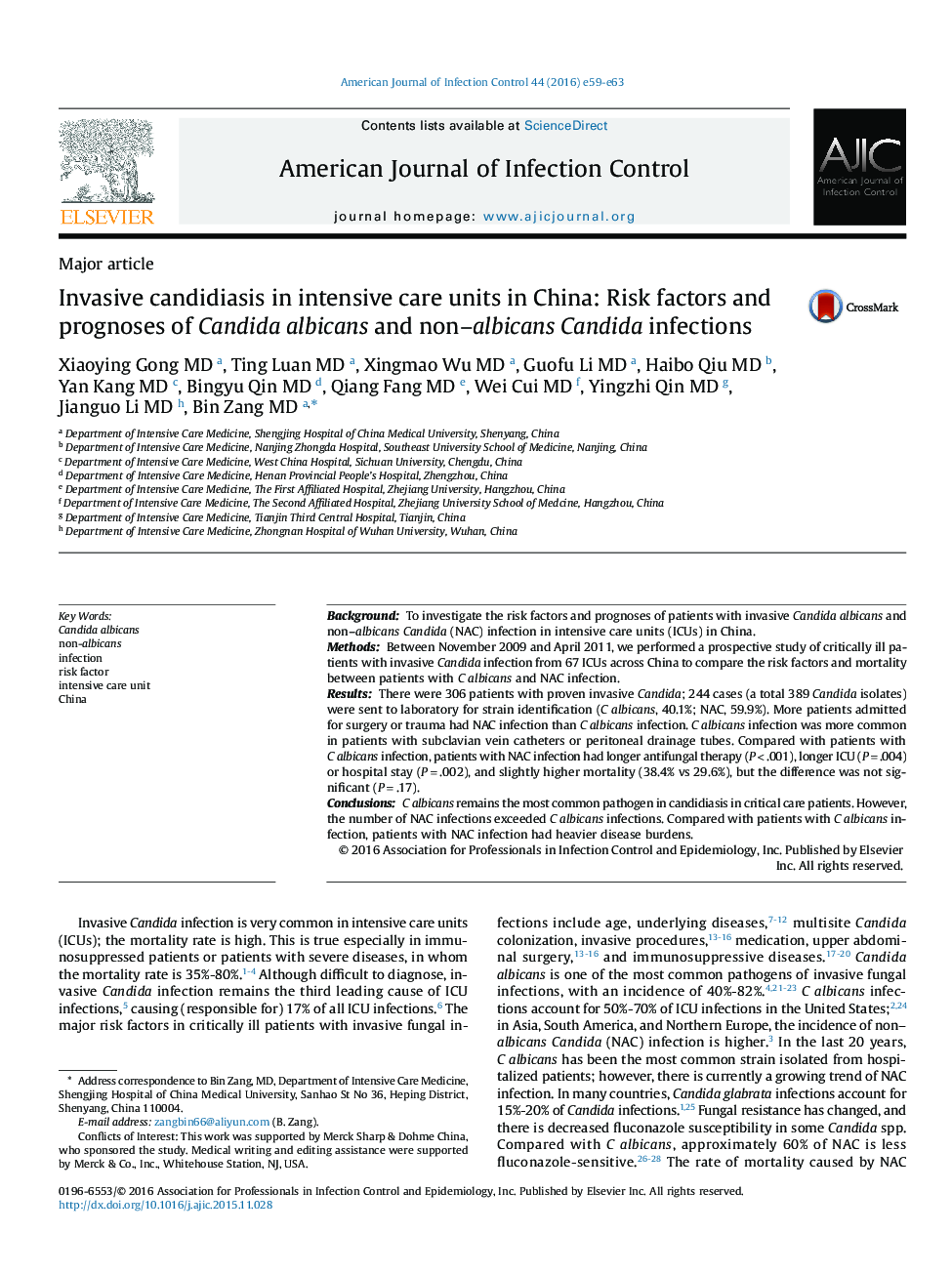| کد مقاله | کد نشریه | سال انتشار | مقاله انگلیسی | نسخه تمام متن |
|---|---|---|---|---|
| 5866487 | 1563459 | 2016 | 5 صفحه PDF | دانلود رایگان |
- We analyzed the risk factors of Candida albicans or non-albicans Candida infection in China.
- More patients admitted for surgery or trauma had non-albicans Candida infection.
- Candida albicans infection was more common in patients with medical interventions.
- Non-albicans Candida infection patients had heavier disease burdens and longer intensive care unit and hospital stays.
BackgroundTo investigate the risk factors and prognoses of patients with invasive Candida albicans and non-albicans Candida (NAC) infection in intensive care units (ICUs) in China.MethodsBetween November 2009 and April 2011, we performed a prospective study of critically ill patients with invasive Candida infection from 67 ICUs across China to compare the risk factors and mortality between patients with CÂ albicans and NAC infection.ResultsThere were 306 patients with proven invasive Candida; 244 cases (a total 389 Candida isolates) were sent to laboratory for strain identification (CÂ albicans, 40.1%; NAC, 59.9%). More patients admitted for surgery or trauma had NAC infection than C albicans infection. C albicans infection was more common in patients with subclavian vein catheters or peritoneal drainage tubes. Compared with patients with CÂ albicans infection, patients with NAC infection had longer antifungal therapy (Pâ<â.001), longer ICU (Pâ=â.004) or hospital stay (Pâ=â.002), and slightly higher mortality (38.4% vs 29.6%), but the difference was not significant (Pâ=â.17).ConclusionsC albicans remains the most common pathogen in candidiasis in critical care patients. However, the number of NAC infections exceeded CÂ albicans infections. Compared with patients with CÂ albicans infection, patients with NAC infection had heavier disease burdens.
Journal: American Journal of Infection Control - Volume 44, Issue 5, 1 May 2016, Pages e59-e63
